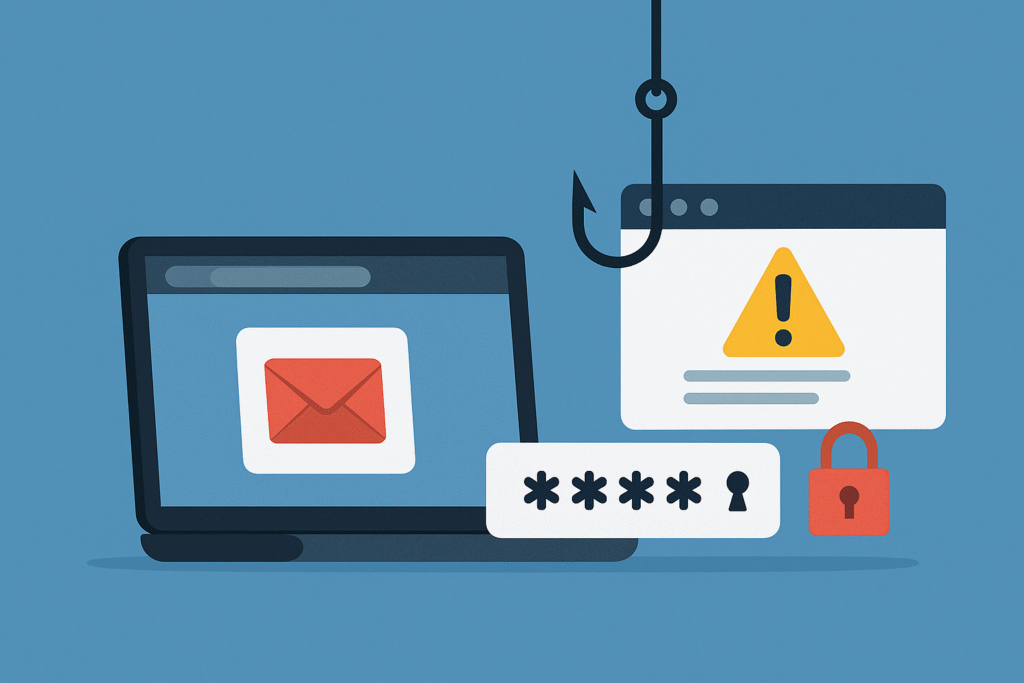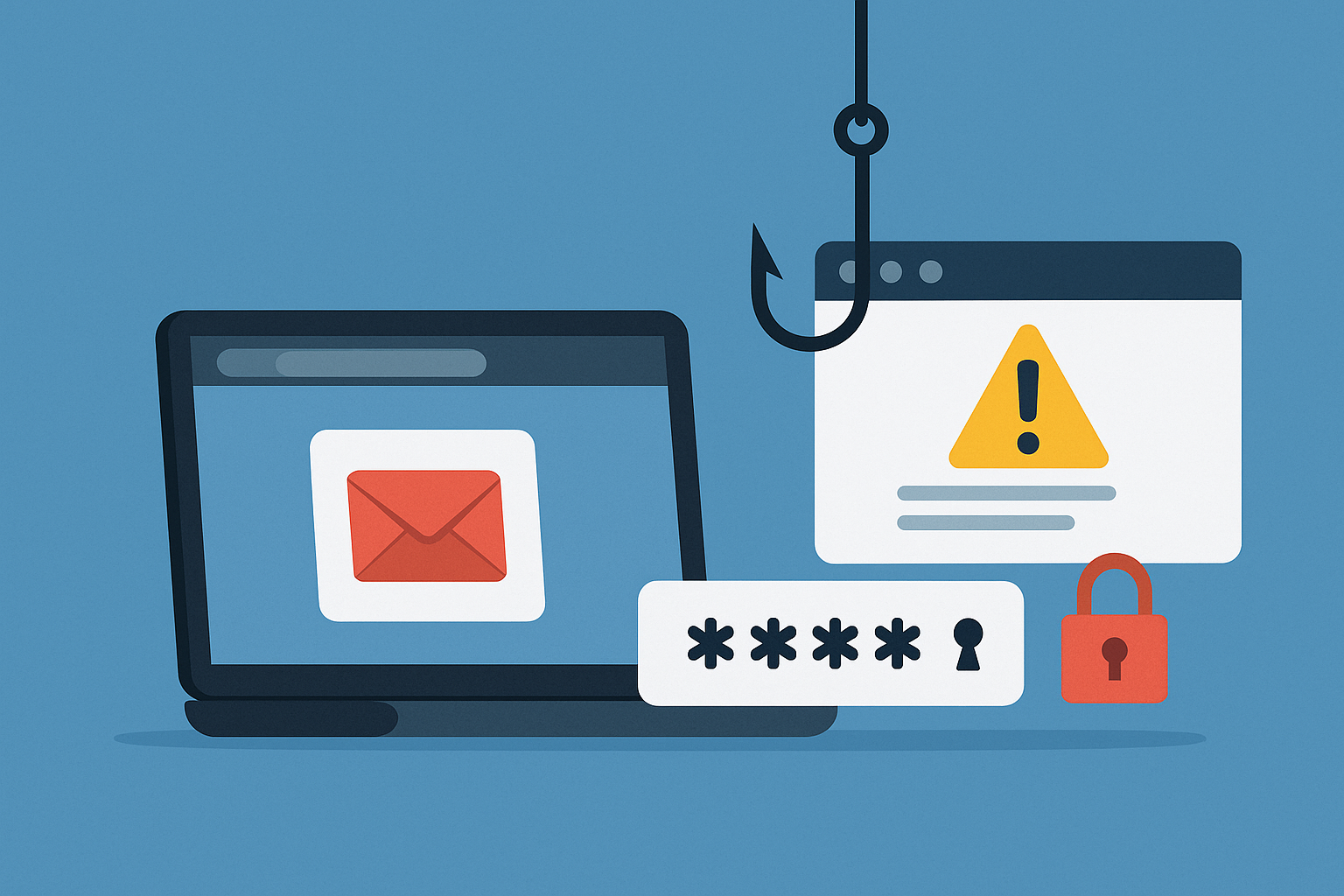Every day, millions of people receive emails, texts, or messages that look completely normal—but are actually traps. These deceptive tactics are called phishing, and they’re one of the most common and dangerous forms of cybercrime today. In this article, you’ll learn exactly what phishing is, how to recognize it, and—most importantly—how to protect yourself from becoming a victim.
What Is Phishing?
Phishing is a type of online scam where attackers impersonate legitimate organizations or individuals to trick you into revealing sensitive information such as passwords, credit card numbers, or login credentials.
The term “phishing” comes from the idea of “fishing for information”—the scammer throws out bait in the form of a fake message and hopes someone bites.
Common Types of Phishing Attacks
Phishing isn’t limited to just email. Here are the main types of phishing you should know:
1. Email Phishing
This is the most common form. You receive an email that appears to be from your bank, a delivery service, or even a co-worker. It asks you to click a link, update your password, or download an attachment—which can lead to identity theft or malware.
2. Spear Phishing
A more targeted version of phishing. Scammers customize the message with your name, job title, or personal info to make it more convincing.
3. Smishing (SMS Phishing)
Scam messages sent via text. They often include links to fake websites or claim you’ve won a prize or need to verify account details.
4. Vishing (Voice Phishing)
Phone calls where scammers pretend to be from legitimate organizations, asking you to confirm sensitive data.
5. Clone Phishing
Attackers replicate a legitimate email you’ve received in the past, replacing the real link or attachment with a malicious one.
6. Social Media Phishing
Fake profiles and direct messages on platforms like Facebook, Instagram, or LinkedIn attempting to lure users into giving up info or clicking harmful links.
What Do Phishing Emails or Messages Look Like?
Here are signs to watch for:
- Spelling or grammar errors
- Unusual email addresses (e.g., support@amaz0n-support.com)
- Urgent or threatening language (e.g., “Your account will be suspended in 24 hours”)
- Suspicious links (hover over links before clicking—check if they lead to a trusted site)
- Unexpected attachments
- Requests for personal information
Real-World Phishing Examples
- Banking Scam: An email that looks like it’s from your bank asks you to log in via a provided link. The website is a fake, designed to steal your credentials.
- Package Delivery Fraud: A text claims your package couldn’t be delivered and asks you to click a link to reschedule—leading to a malware download.
- Workplace Phishing: An email that appears to be from your company’s HR department asks you to fill out a form with your login info.
What Happens If You Fall for a Phishing Scam?
The consequences can be severe:
- Identity theft
- Unauthorized transactions
- Account takeovers
- Malware infections
- Ransom demands
Once scammers get access to one account, they often try to access others—especially if you reuse passwords.
How to Protect Yourself from Phishing
Here are simple but powerful ways to stay safe:
1. Think Before You Click
Don’t click links or download attachments from unknown or suspicious sources.
2. Verify the Sender
If a message seems odd—even from someone you know—verify it through another method (e.g., call them directly).
3. Use Multi-Factor Authentication (MFA)
Even if your password is stolen, MFA adds an extra layer of security.
4. Install Security Software
Use antivirus and anti-malware software on all your devices. Many programs detect phishing attempts in real time.
5. Keep Your Systems Updated
Regular updates fix security flaws that scammers exploit.
6. Use Spam Filters
Email services like Gmail and Outlook have strong spam filters—keep them turned on and updated.
7. Educate Yourself and Others
Stay informed about the latest phishing techniques. If you work in a team, consider security awareness training.
8. Use a Password Manager
These tools help you create strong, unique passwords and avoid typing them into fake websites.
What to Do If You’ve Been Phished
Act fast:
- Disconnect your device from the internet.
- Run a malware scan using a reputable security tool.
- Change your passwords immediately—especially for sensitive accounts.
- Contact your bank or credit card provider if financial info was exposed.
- Report the incident to appropriate authorities or the company being impersonated.
- Monitor your accounts for unusual activity.
Phishing and Business: A Serious Threat
If you run a business or work in IT, phishing poses a major risk:
- Data breaches
- Financial loss
- Reputational damage
- Compliance violations
Many companies now simulate phishing attacks internally to train employees on how to recognize and avoid them.
Final Thoughts: Stay Alert, Stay Safe
Phishing is a serious threat—but it’s also preventable. By staying informed, practicing caution, and using the right tools, you can dramatically reduce your risk of falling for an online scam.
Remember: If something feels off, it probably is.








